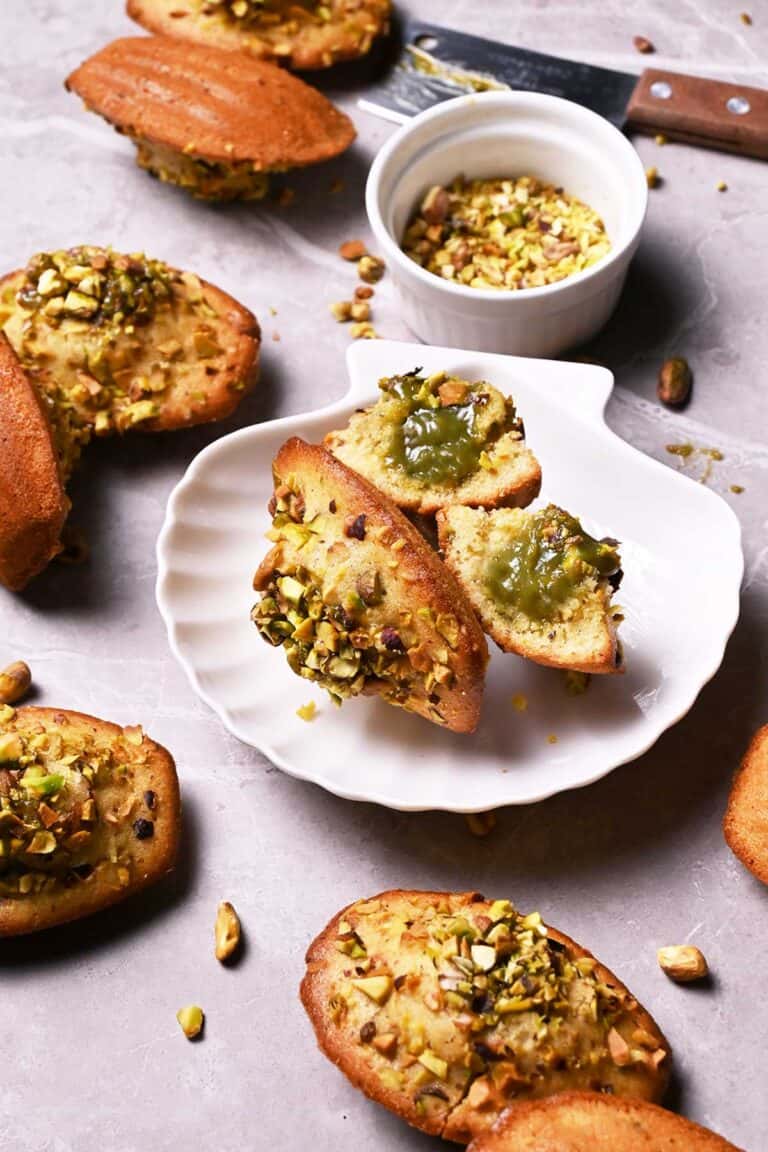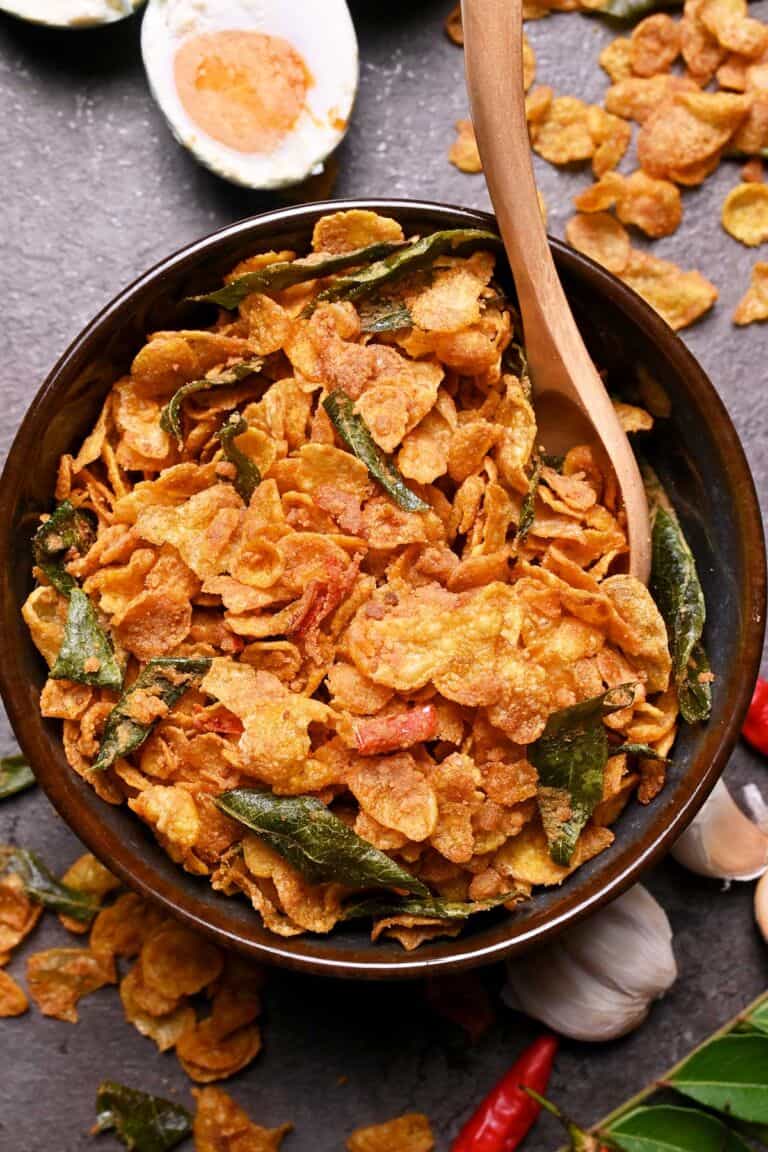Zebra-Striped Matcha Taro Shortbread Cookies
This post may contain affiliate links. Please read my disclosure policy for details.
These Zebra-Striped Matcha Taro Shortbread Cookies feature layers of purple taro shortbread cookie dough laced with green matcha dough to produce a two-toned, zebra-like effect.
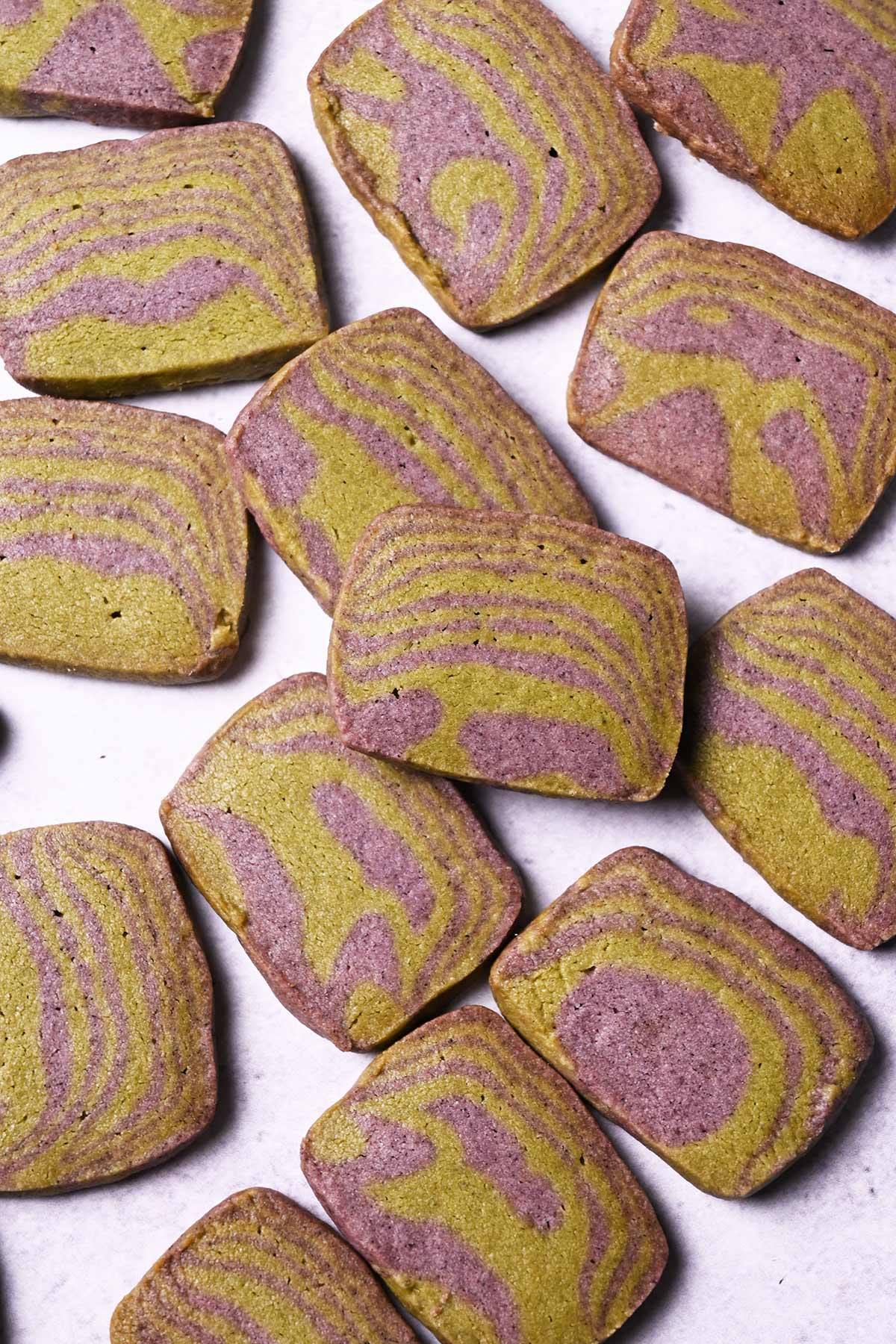
Do you still remember my previous Zebra-Striped Shortbread Cookies and Zebra-Striped Matcha Shortbread Cookies? Since Halloween is coming up soon, I thought of twisting the recipe a little bit to make it more fun.
I used matcha and taro powder to give the cookies contrasting green and purple layers. All the ingredients are natural and not artificially made. These Zebra-Striped Matcha Taro Shortbread cookies are buttery, crispy, melt-in-your-mouth, and delicious! Since the taro taste is very subtle, the earthy matcha flavor is more dominant in these cookies.
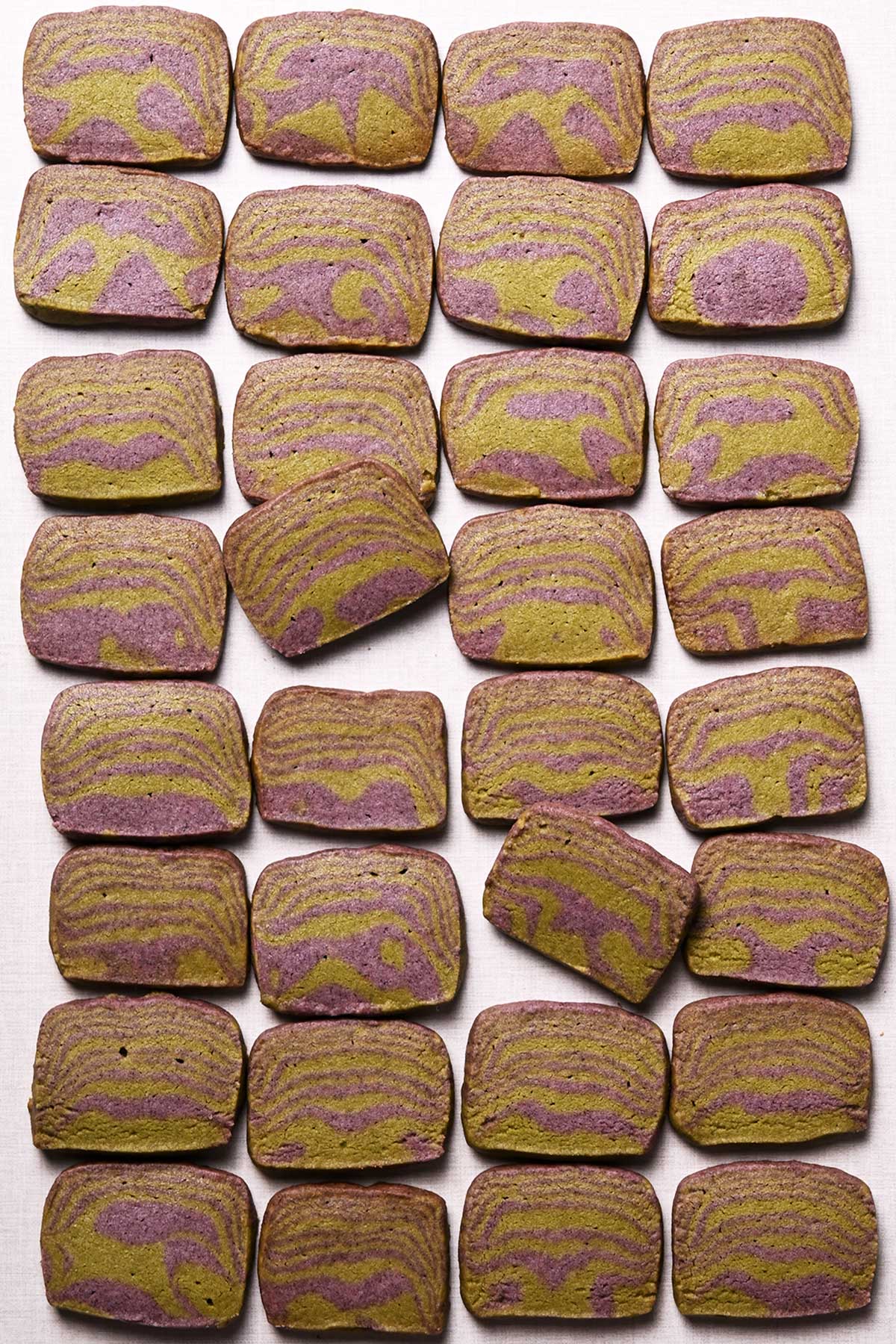
Even though the stripes look difficult to make, I promise you that they are not. You don’t need any rolling at all. All you need to do is some stacking and slicing work, repeating until we have a lot of layers. We are also shaping it into a long, rectangle. When you are ready to bake, you just need to slice it into thin layers with a knife.
The Best Flour to Make Shortbread Cookies
You can use both all-purpose or cake flour for shortbread cookies. I personally like to use cake flour because it gives light, crisp, and tender textures to the cookies. If you use all-purpose flour, I find them softer and chewier than the ones made with cake flour.
If you don’t have cake flour but still want these lighter cookies, try converting from all-purpose flour to cake flour. Take one cup of all-purpose flour, spooned, and leveled. Remove 2 tablespoons, and then add two tablespoons of cornstarch to the all-purpose flour.
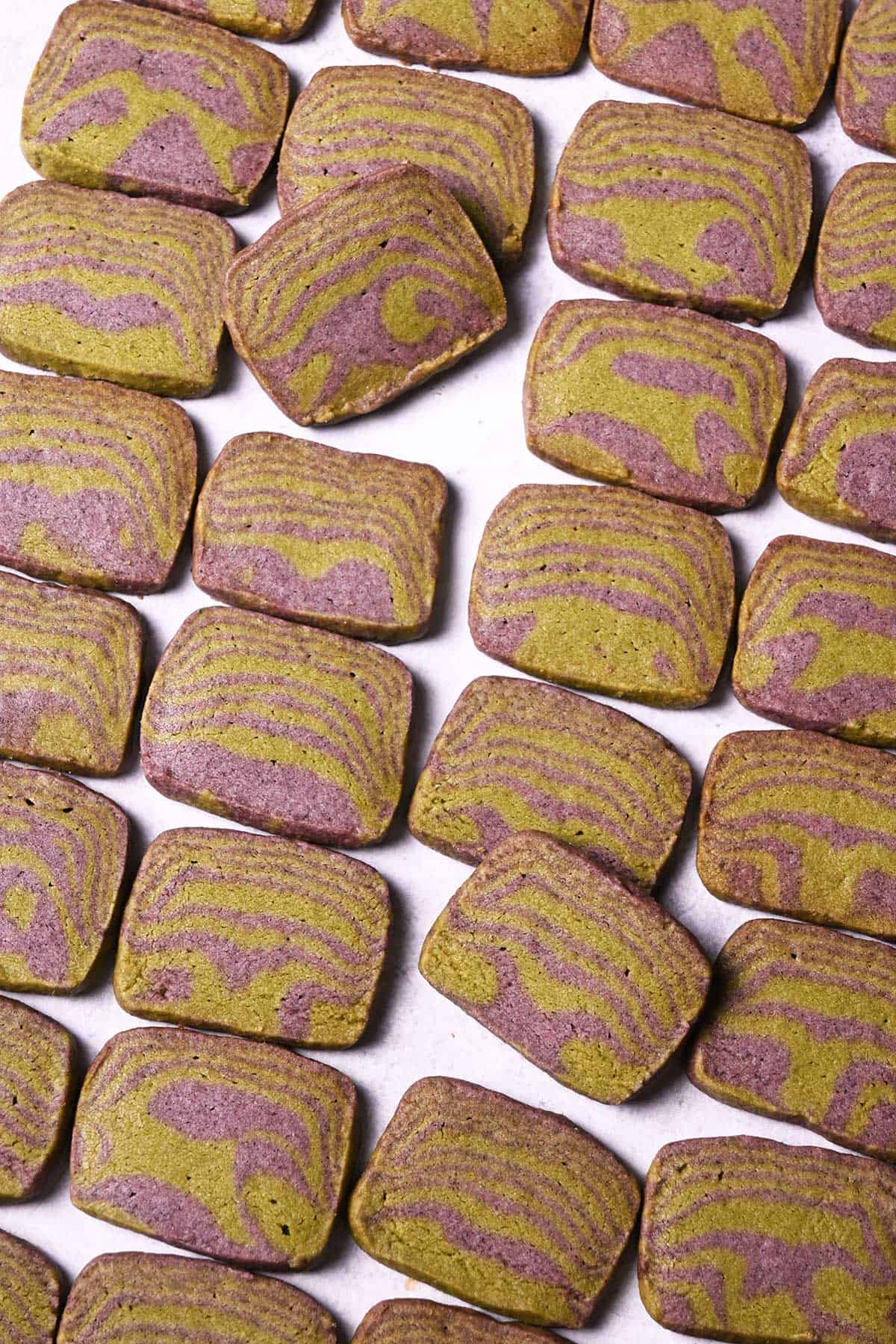
Choosing the Right Matcha
Matcha is often divided between ceremonial grade and culinary grade. While they are similar, they have some differences. Ceremonial-grade matcha is considered higher quality with a bright green color and should be used for drinking. Meanwhile, the culinary-grade matcha powder is slightly lower quality and usually has a muted green color. The culinary-grade matcha is intended for baking and cooking purposes.
What is Taro?
Taro is a starchy root vegetable that is native to Southeast Asia and India. It has a mildly sweet, nutty taste. You may have had or heard of taro from a bubble tea shop. Taro bubble milk tea uses taro powder, which gives the drink a bright purple color.
Taro Powder Substitutes
For this recipe, I used unsweetened, pure taro powder for the purple layers. If you cannot find pure taro powder, you can also substitute it with these ingredients:
- Taro powder mix. Since taro powder mix usually has sugar added, the cookies will be a little bit sweeter. But not much, because we only use a small amount of taro powder in the dough.
- Ube extract. Just add a little until you get the desired purple color.
- Purple yam powder. It is basically ube in powder form.
- Purple sweet potato powder. Purple sweet potato is similar to taro and purple yam can be substituted in recipes.
How to Make the Striped Pattern
You start by making the basic vanilla shortbread cookie dough. Divide the dough into two equal parts. Add matcha powder to one dough and taro powder to the other. After you have made both flavors, it is time to layer them.
To do this, I divide each dough into two and stack them into 4 alternating layers. Press them gently but not evenly or your zebra pattern will be too neat. Then, cut vertically in the middle. Put one part overlay the other. Not you have 8 alternating layers.
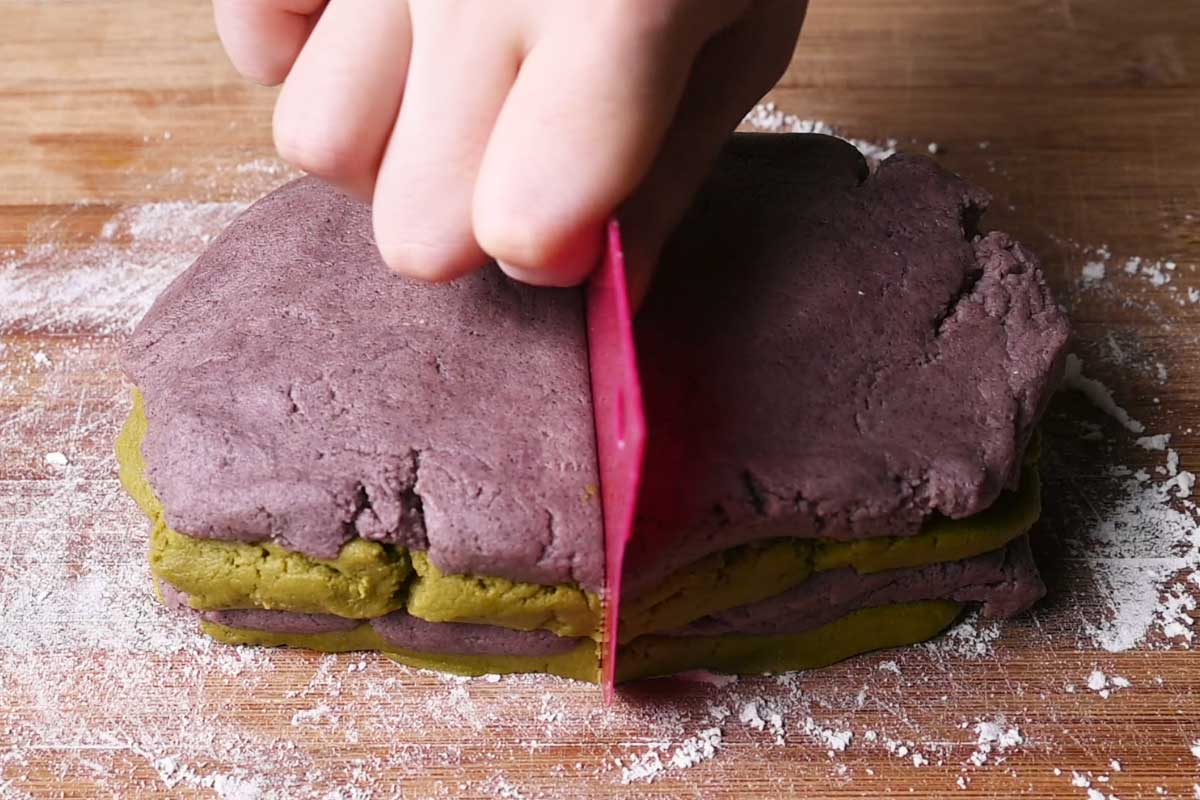
Press, cut, and stack the dough again until you get 16 alternating layers. Press and roll the dough into a log. Cover with parchment paper or plastic wrap and chill until the dough is firm for at least 2 hours.
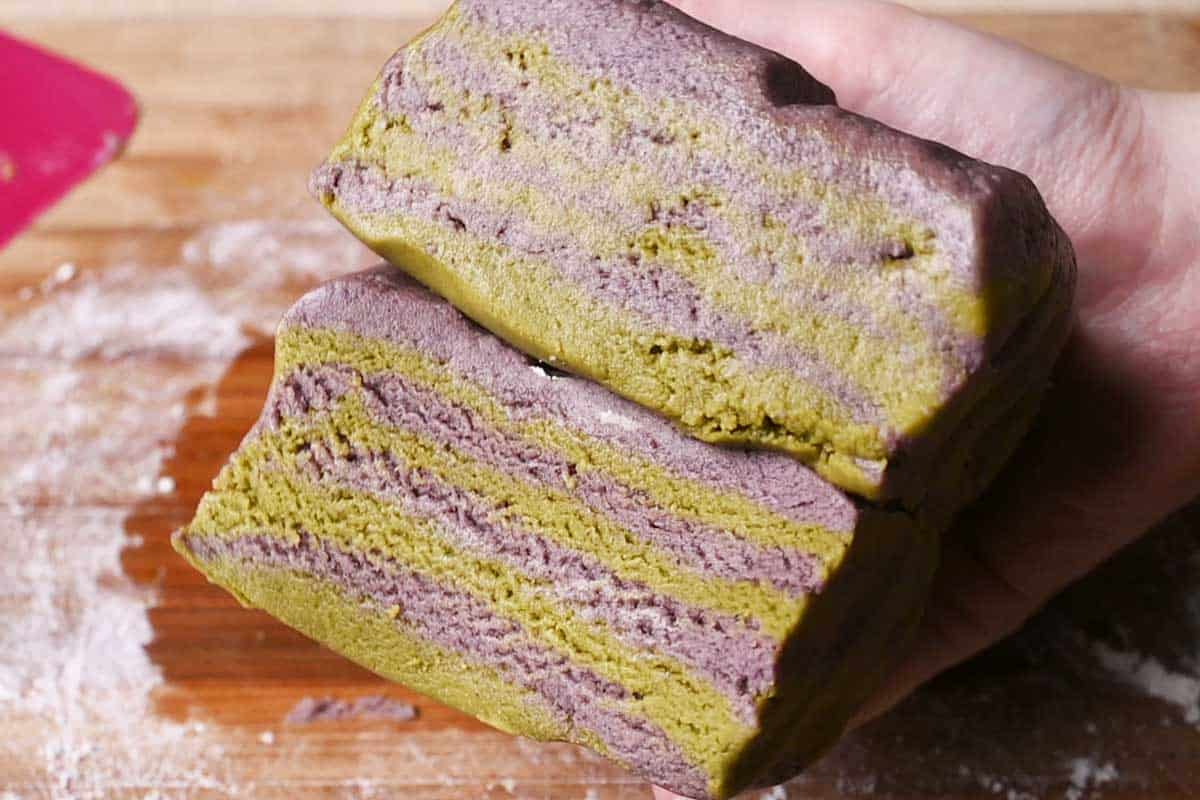
When ready to bake, cut the log into thin slices about 1/8 to 1/4-inch or about 3-5 mm. Put them into a prepared baking pan and bake until the edges turn light brown. Transfer them to a cooling rack immediately.
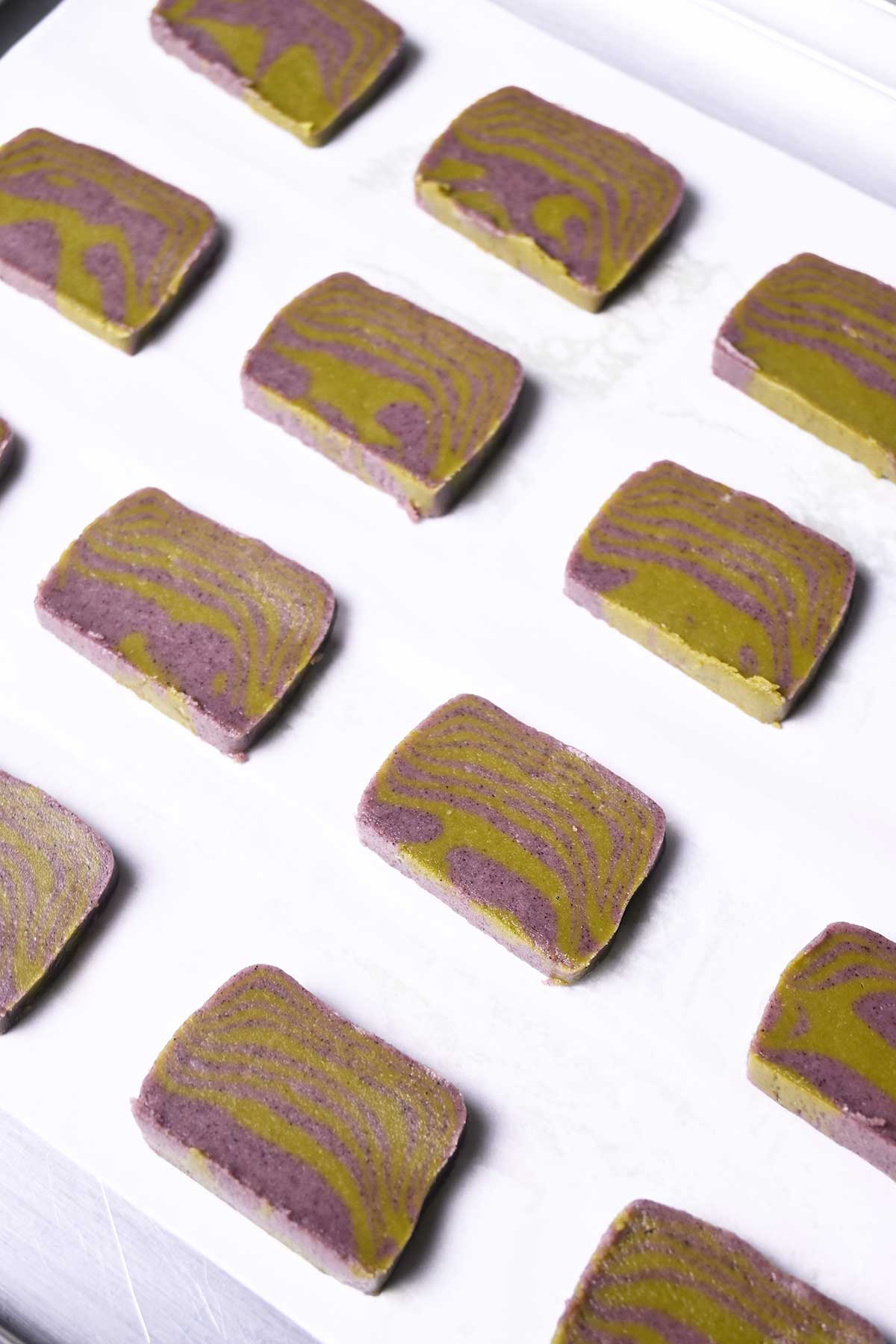
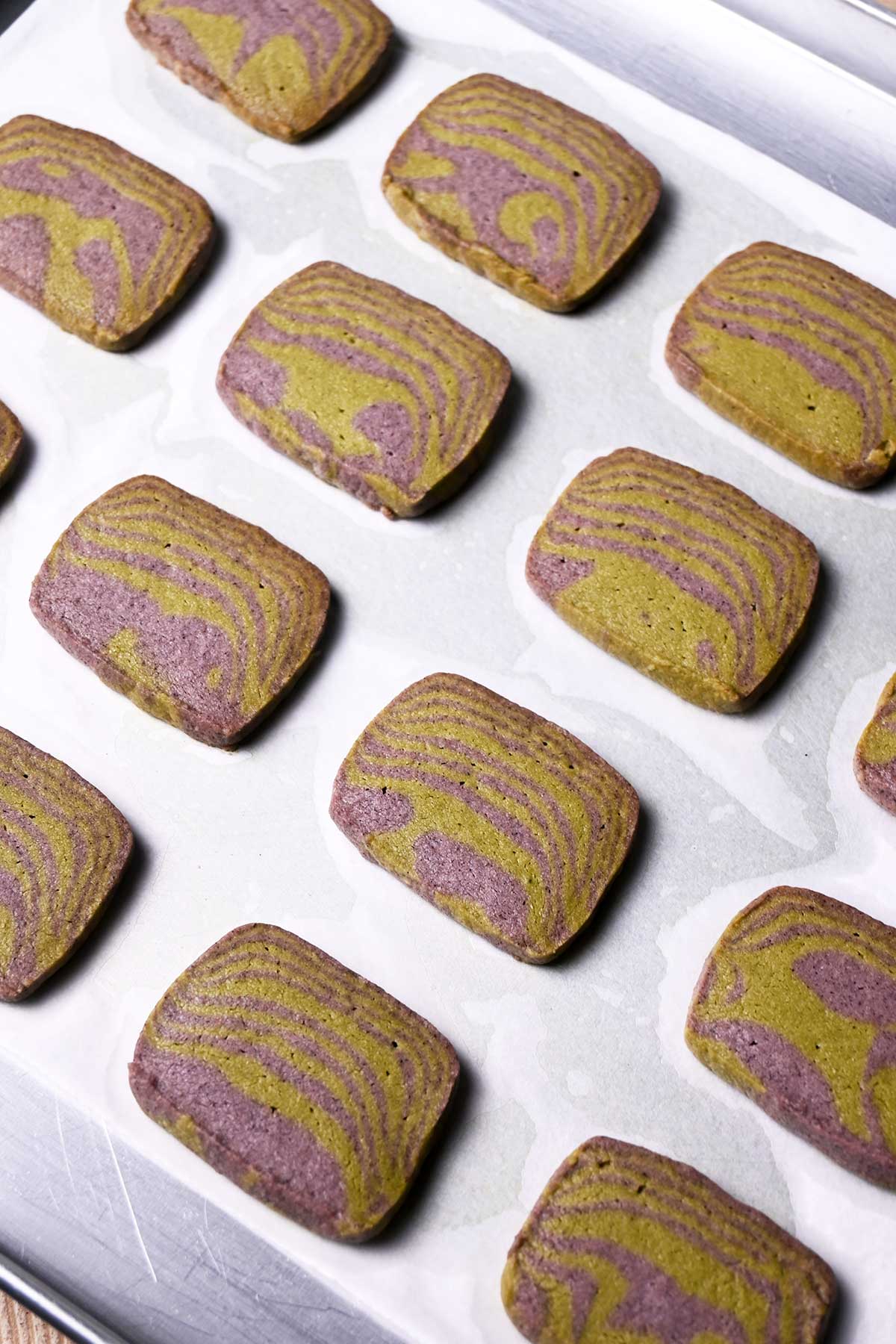
If the steps are confusing, you can watch how I made the layers in the video below the recipe or on my YouTube channel.
Make These Cookies in Advance
These Zebra-Striped Matcha Taro Shortbread Cookies can be made several days in advance. After you make the cookie log, you can refrigerate it, covered, for up to 3 days prior to baking.
If you are making shortbread dough longer than 3 days ahead of time, it is best to freeze it. You can simply place the cookie log in an airtight container and freeze up to three months. Thaw it the night before in the fridge, then slice and bake the dough as directed.
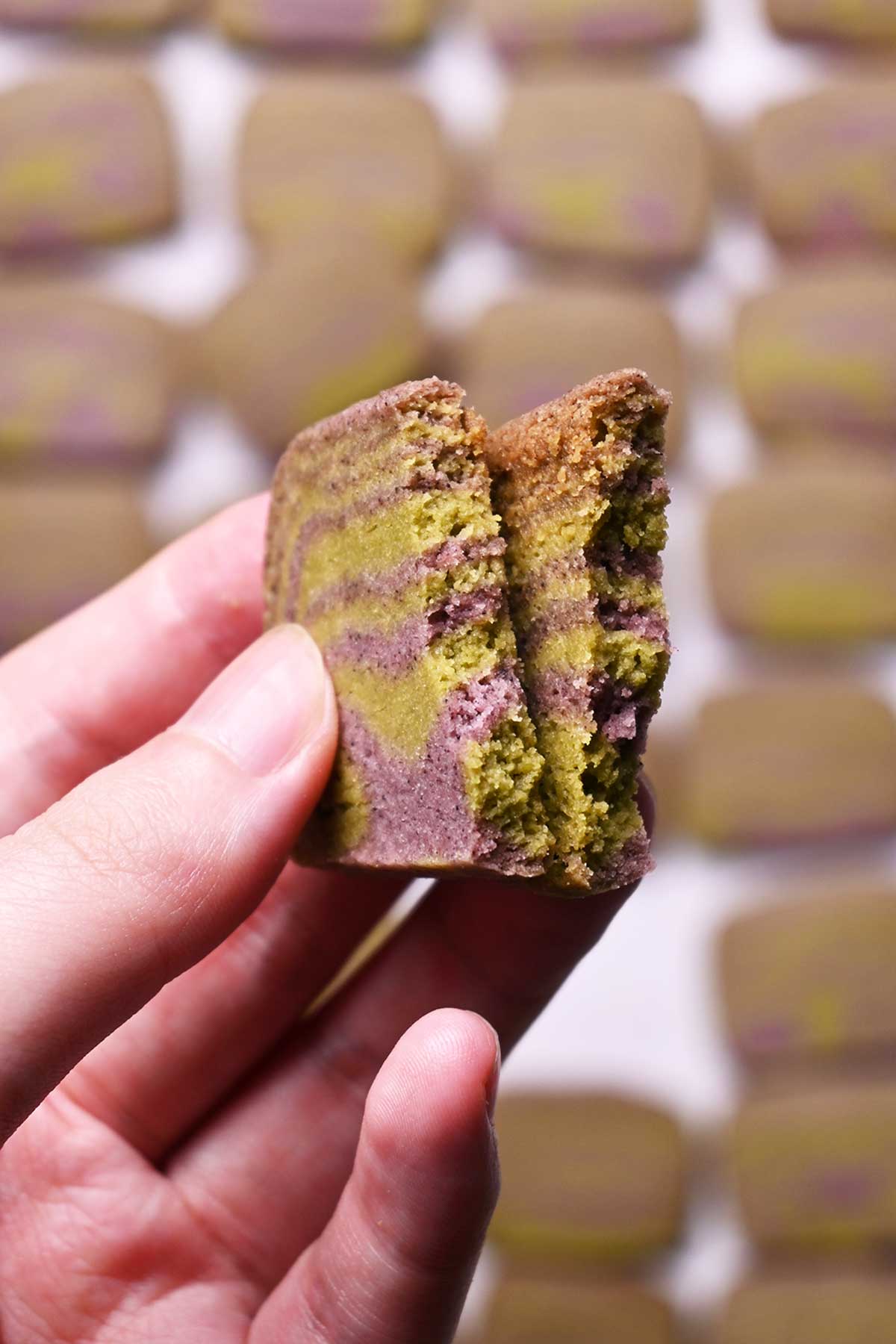
More Shortbread Cookies Recipes
- Matcha Shortbread Cookies
- Masala Chai Shortbread Cookies
- Lemon Thyme Shortbread Cookies
- Earl Grey Shortbread Cookies
- Cherry Blossom Shortbread Cookies

Ingredients
- 1 cup (225 gr) unsalted butter, room temperature
- 3/4 cup (90 gr) confectioners’ sugar
- 1/2 tsp vanilla extract
- 2 1/4 cups (285 gr) cake flour, 285 g
- 1/2 tsp salt
- 1 1/2 tbsp matcha powder
- 2 tbsp taro powder
Instructions
Make The Cookie Dough
- In a large bowl, add unsalted butter and sift in the confectioners' sugar. Mix with a spatula or hand mixer until well combined.
- Add vanilla extract. Mix until combined.
- Sift in the flour and salt. Mix until well combined. The dough will look crumbly at first, but it will come together as you continue mixing.
- Divide the dough into 2 bowls evenly. Sift in matcha powder into a bowl and mix until well combined with a spatula. Sift in taro powder into the other bowl and mix until well combined.
- If the dough is too sticky to handle, refrigerate it for 20 minutes until just a little bit firmer.
Assemble
- Take half of the matcha dough and flatten it with your hand into a rough 6×3-inch/15×7.5 cm rectangle. Put the flattened dough onto a floured work surface. Take half of the taro dough and flatten it again into the same size rectangle. Put the flattened taro dough on top of the flattened matcha dough. Repeat the entire process so you have 4 alternating layers. (See the video for the visual guide)
- Cut the layered dough vertically in the middle with a sharp knife. Then, put one part overlay the other. Press and pat the dough into a rough 6×3-inch/15×7.5 cm rectangle. Cut vertically in the middle and stack the dough again. Press the dough into a rectangle log about 1.5×2-inch/4x5cm wide. (See the video for the visual guide)
- Wrap the dough with parchment paper or plastic wrap. If the dough is too long, you can divide it into two and wrap them individually. Chill until very firm for at least 2 hours.
Bake
- Preheat oven to 300F/150°C and line two baking pans with parchment paper.
- Slice the log into a 1/8 to 1/4-inch or about 3-5mm thick with a sharp knife. Arrange the slices on the baking pan, spacing 1.5-inch apart.
- Bake for 18-20 minutes or until the bottom edges of the cookies are golden brown in color. Rotate the baking sheets halfway through for even baking.
- Transfer to a cooling rack to cool completely.

